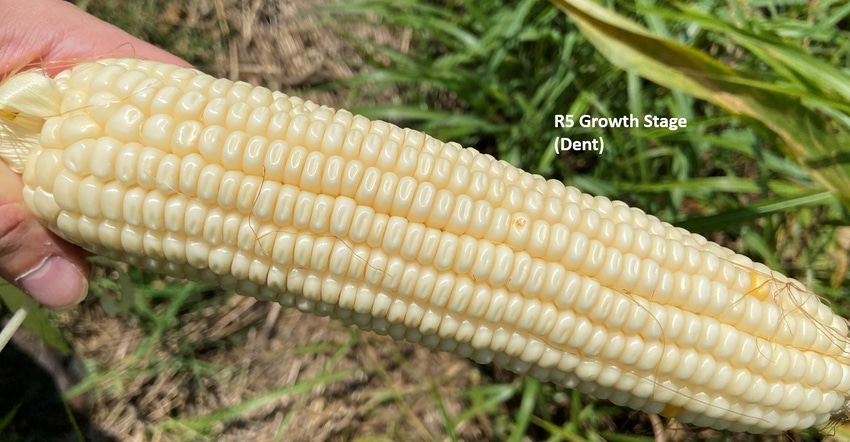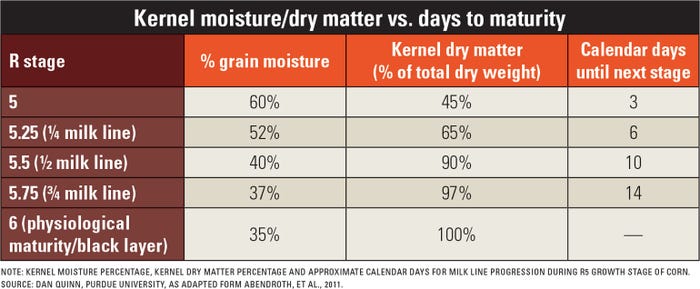July 28, 2022

What is important about corn’s R5 growth stage for yield? Kernel dry matter accumulation is occurring during this stage. At the beginning of the R5 growth stage, even though corn is getting close to maturity, total kernel dry weight is only at 45%. This means 50% to 55% of kernel dry weight is still left to be accumulated.
Therefore, if significant environmental stress, such as drought or nutrient deficiency, occurs during the beginning of R5, significant yield losses can still happen. Kernel weight is a major yield component for corn, and achieving excellent grain fill and maximum kernel weight is important for achieving high corn yields.
Related: Understand what happens at R5 growth stage
Previous research has shown that complete plant death from frost and complete leaf loss at beginning R5 can reduce corn yield by 41% and 27%, respectively. However, once corn has reached half milk line, about 90% of kernel dry matter has been accumulated, and yield losses may only be 5% to 10%.
The importance of kernel weight is also evident when performing yield checks using the yield component estimation method. The “fudge factors” used to estimate corn grain yield are based on kernel weight, or the number of kernels per 56-pound bushel.
Related: Kernel weight factor can swing corn yields
The most common fudge factor used is 90, or 90,000 kernels per 56-pound bushel. However, using a range from 65 for heavy kernels to 105 for light kernels can give you an indication of the importance of kernel weight for yield and the impacts environmental stresses can have during corn grain fill.

Remember that although corn has reached the R5 growth stage, there is still a significant amount of yield left to be made. Factors such as photosynthetic leaf area loss, high temperatures, drought, premature ear drooping, termination of irrigation too early, nutrient deficiencies, foliar diseases and insect damage can still impact corn yield at R5. That happens if one or more of these limits the amount of carbohydrates provided by the plant, thereby reducing kernel weight.
However, these yield losses can drastically decrease as the milk line progresses and the corn plant approaches maturity. Therefore, it is still important to scout and walk your fields later in the season.
Pull some ears and understand where the milk line is within kernels to determine what potential impacts environmental stresses may still have. Get a feel for how much longer until that corn plant reaches maturity.
Quinn is a Purdue University Extension corn specialist. Reach him at [email protected].
You May Also Like




